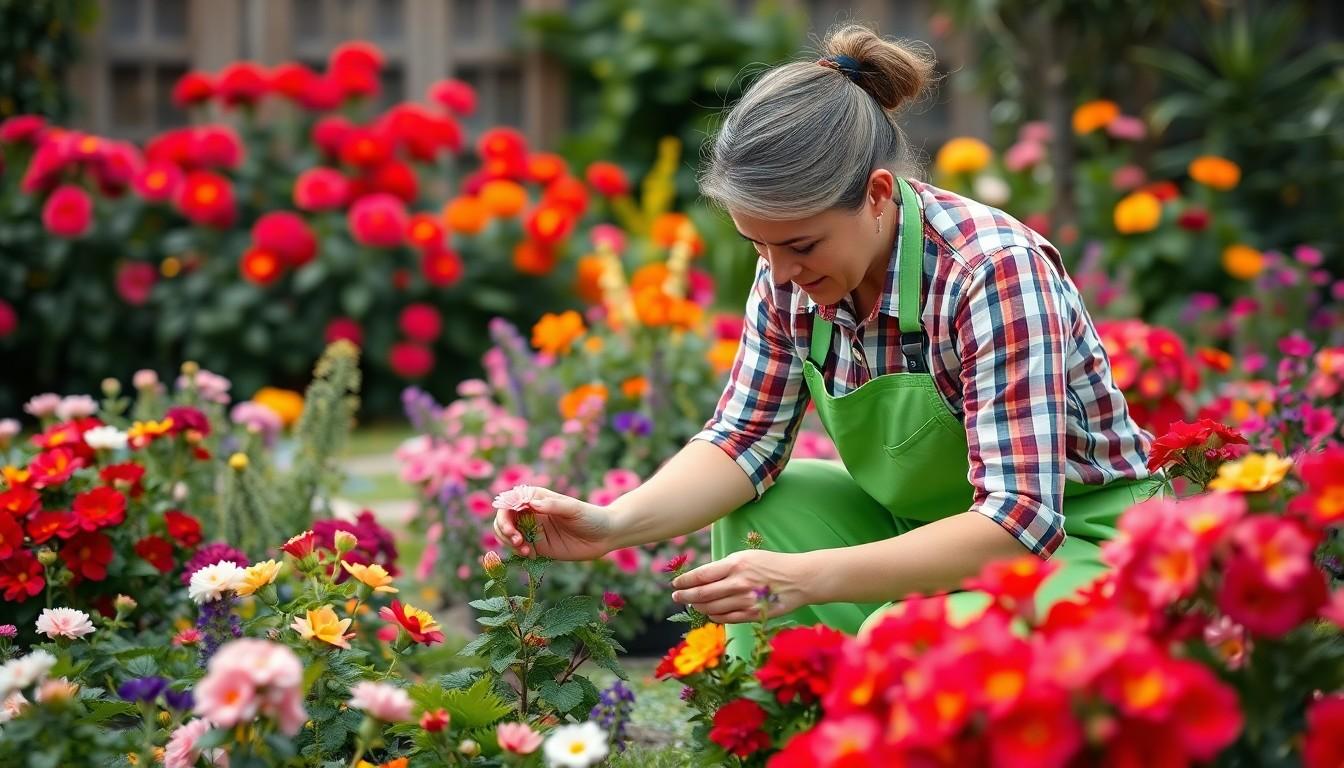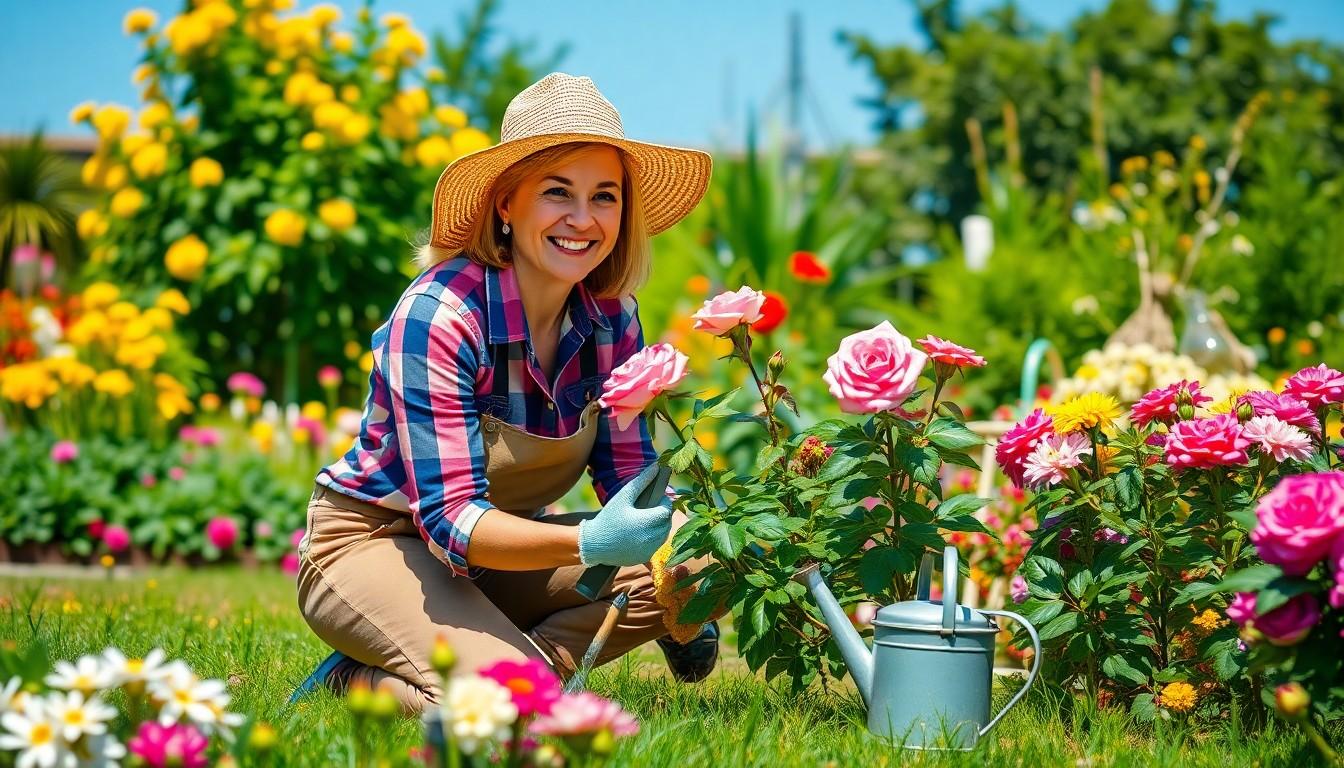Gardening enthusiasts speak their own special language filled with quirky terms and phrases that might leave newcomers scratching their heads. From “deadheading” to “volunteer plants” this green-thumbed vocabulary adds color and character to the world of horticulture. While experienced gardeners toss around terms like “damping off” and “bolting” with ease newcomers often find themselves lost in translation. But don’t worry – this peculiar gardening lingo isn’t meant to exclude anyone. It’s simply evolved over centuries of people sharing their love for plants and growing things. Today’s gardening slang blends traditional terminology with modern expressions creating a rich tapestry of horticultural communication that’s both practical and entertaining.
Gardening Slang
Gardening terminology combines scientific nomenclature with practical descriptions used in everyday cultivation. This specialized vocabulary helps gardeners communicate effectively about plants, tools and techniques.Basic Botanical Terms
Botanical terms describe plant anatomy, growth patterns, and classification systems. The root system includes taproots, fibrous roots and rhizomes that anchor plants in soil. Leaves feature distinct parts like petioles connecting to stems, margins that define leaf edges and veins that transport nutrients. Flowers contain pistils, stamens and sepals essential for reproduction. Plant classifications include annuals that complete lifecycles in one season, perennials that return multiple years and biennials that flower in their second year. Growth habits encompass vining plants that climb, ground covers that spread horizontally and upright specimens with branching patterns.Garden Tool Terminology
Garden tools carry specific names based on their function and design characteristics. A spade features a flat blade for digging while a trowel offers a smaller scoop for transplanting. Pruners include bypass models that cut like scissors and anvil types that press against a flat surface. Cultivators loosen soil with multiple tines while hoes slice through earth with sharp edges. Watering equipment ranges from oscillating sprinklers that create fan patterns to soaker hoses that deliver moisture directly to roots. Storage solutions include tool racks, garden carts and potting benches designed for organizing supplies.Plant Care Slang and Jargon
Gardeners communicate through specialized phrases for daily plant maintenance tasks. This unique vocabulary creates efficiency in describing common care activities.
Pruning and Trimming Talk
Expert gardeners use distinct terms for cutting back plants. “Pinching” refers to removing growth tips with fingers to encourage bushier plants. “Deadheading” means removing spent blooms to promote more flowers. “Topping” describes cutting off the main stem to control height. Common phrases include “giving a haircut” for general trimming maintenance “heading back” for reducing overall size of shrubs. Advanced terminology encompasses “crown reduction” for mature tree maintenance “espalier cuts” for training fruit trees against walls.Watering and Feeding Phrases
Plant hydration vocabulary includes specific terms for moisture management. “Deep soaking” indicates thorough watering that reaches root zones. “Bottom watering” refers to adding water to saucers beneath pots. Fertilizing terms include “feeding heavy feeders” for nutrient-hungry plants like tomatoes “foliar feeding” for spraying nutrients directly on leaves. Moisture assessment terms feature “finger test” for checking soil dampness “dry knuckle deep” for watering timing. Common nutrient slang includes “juice” for liquid fertilizer “tea” for compost extract “bloom booster” for phosphorus-rich supplements.Garden Design and Layout Terms
Garden design terminology encompasses specific phrases that describe landscape elements spatial arrangements. These terms help gardeners communicate effectively about garden organization planning strategies.Bed and Border Vocabulary
Garden beds feature distinct terminology that defines their shapes functions. A “feature bed” serves as a focal point containing specimen plants or artistic elements. “Island beds” float independently in lawn areas while “foundation beds” hug building perimeters. “Mixed borders” combine different plant types including perennials shrubs annuals. Common bed descriptions include:-
- Cottage beds: Informal plantings with dense flower groupings
-
- Lasagna beds: Layered growing spaces with stacked organic materials
-
- Matrix planting: Interwoven plant communities that mimic natural patterns
-
- Drift planting: Sweeping curves of single plant varieties
Hardscaping Expressions
Hardscaping elements incorporate non-plant materials into garden designs. “Backbone features” refer to permanent structures that anchor the landscape. Key hardscaping terms include:-
- Parterre: Formal garden divided by paths into ornamental patterns
-
- Ha-ha: Sunken wall creating invisible barrier between garden lawn
-
- Knot garden: Intricate design using low hedges geometric patterns
-
- Living wall: Vertical structure supporting growing plants
-
- Desire line: Natural pathway created by frequent foot traffic
-
- French drain: Underground channel directing water away from structures
